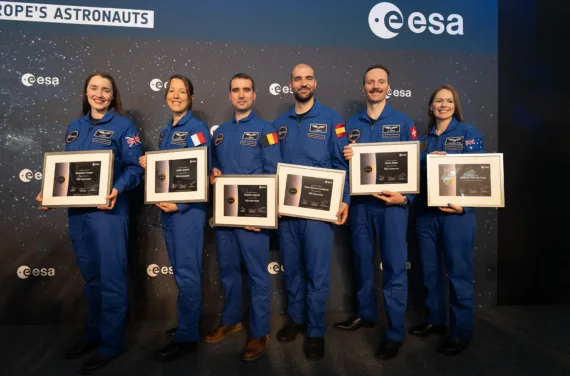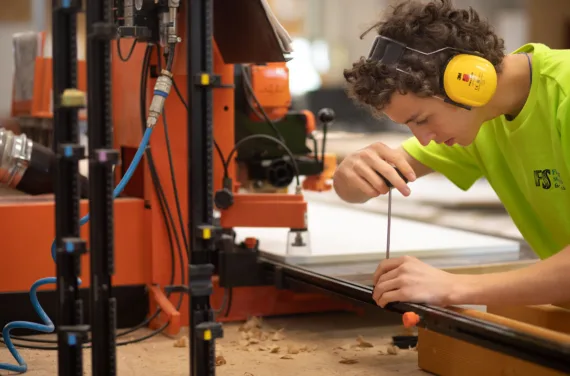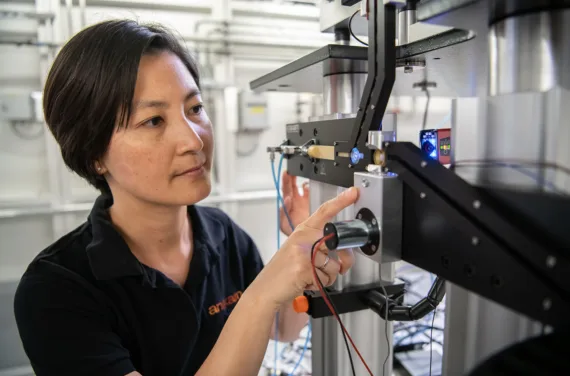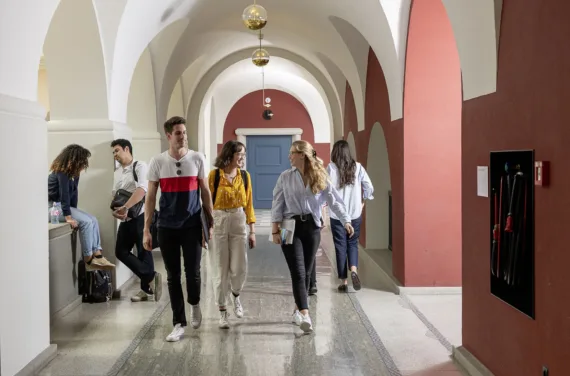National and international cooperation in education, research and innovation
Swiss education, research and innovation policy addresses cross-cutting themes. Doing so creates major opportunities across all areas. At the same time, cooperation at national and international level is a challenge. Here is a brief overview of the relevant activities.

The quality of education, research and innovation depends on cooperation both within Switzerland and on an international level. At the same time, a healthy balance between cooperation and competition can improve the competitive performance and resilience of the Swiss ERI sector. Cooperation and coordination, whether at national or international level, lead to synergies and innovative ideas. At the same time, they ensure that resources are used efficiently and effectively. Competition, in turn, encourages ERI stakeholders to increase their own quality, thus driving excellence.
Compared to other countries, Switzerland is a leader in education, research and innovation. One of the stated objectives of the Federal Council's ERI policy for 2025-2028 is to ensure that Switzerland retains its leading position in the ERI sector. One of the success factors is the internationalisation of the ERI sector, given the intense global competition in this field. Swiss ERI players actively pursue international activities in their area of activity and are regarded as valued partners. This includes Swiss federal institutes of technology, cantonal universities, universities of applied sciences, universities of teacher education and research organisations. Of course, it also includes national funding organisations (i.e. Swiss National Science Foundation, Swiss Academies of Arts and Sciences and Innosuisse), which work with homologous institutions in other countries.




Cooperation among ERI stakeholders boosts the performance of the Swiss ERI sector. Both publicly funded and private stakeholders work together in areas such as higher education and vocational education and training. In times of crisis, they join forces to maximise Switzerland's scientific potential. Mobility within Switzerland and the further development of the general baccalaureate are also common areas of action for various ERI stakeholders.
The Confederation is largely responsible for creating the best possible framework for Swiss ERI stakeholders to pursue activities that raise the international profile of the Swiss ERI sector. It is therefore not surprising that a significant portion of federal funds allocated to the promotion of education, research and innovation is currently channelled towards international cooperation. International cooperation is based on multilateral agreements, for example regarding (European) research organisations or infrastructures, as well as on bilateral agreements and memoranda of understanding between Switzerland and partner countries outside of Europe.
The following list of national and international ERI cooperation activities is not exhaustive. Swiss ERI stakeholders act independently when working with foreign partners. More information on the international activities of ERI stakeholders can be found here (PDF).
Examples of activities relating to research and innovation:
National: Roadmap for research infrastructures
Every four years, SERI prepares the 'Swiss Roadmap for Research Infrastructures'. This strategic planning document provides an overview of the status and development of national and international research infrastructures that Switzerland is involved in. As such, it also serves as the basis for the Federal Council Dispatch on the Promotion of Education, Research and Innovation (ERI). The 2023 Roadmap was the fourth report of its kind, with the fifth slated for publication in the spring of 2027. The preliminary work is already underway. The State Secretariat for Education, Research and Innovation (SERI), the ETH Board, the Swiss Conference of Rectors of Higher Education Institutions (swissuniversities), the Swiss National Science Foundation (SNSF) and the Swiss Academies of Arts and Sciences are all involved in the process.
International: European Space Agency (ESA)
In the space sector, Switzerland seeks to intensify its cooperation with ESA in the space sector and has already taken tangible steps to this end: in 2022, for example, Switzerland signed a cooperation agreement with ESA to develop the European Space Deep-Tech Innovation Centre (ESDI), which is located at the Paul Scherrer Institute (PSI). In April 2024, Switzerland also signed the Artemis Accords. With their signature, 37 states have now confirmed their common understanding of the principles for the peaceful exploration and utilisation of the moon, Mars and other celestial bodies.
International: Bilateral partnerships
Switzerland supports bilateral partnerships with selected countries, for example via the Swissnex network. The aim is to facilitate joint research and innovation projects. One prominent example is the Memorandum of Understanding signed between Switzerland and the United Kingdom in 2022. Among other things, this document enabled Innosuisse and Innovate UK to launch two joint calls, each of which drew 100 proposals for bilateral innovation projects. Another example is the bilateral agreement with India, which was signed back in 2003. This agreement paved the way for the Swiss National Science Foundation and partner agencies in India to launch joint calls for project proposals (including in the field of medicine).
Examples of activities relating to the VPET system:
National: partnership between the Confederation, the cantons and professional organisations
The Confederation, the cantons and professional organisations share responsibility for the Swiss VPET system. In this spirit of partnership, the three parties are jointly committed to ensuring the quality and relevance of vocational and professional education and training. As the Tripartite VPET Conference (TBBK), they manage the VPET system at a strategic level.
International: Exchange programmes and cooperation
Switzerland is also committed to the international transfer and exchange in the field of dual vocational education and training at a technical and diplomatic level to raise the international profile and visibility of the Swiss VPET system. The Swiss Federal University for Vocational Education and Training (SFUVET), for instance, provides expertise for international projects and conferences. In addition, the Swissnex network, in collaboration with Movetia, promotes international mobility in vocational education and training, such as through the NextStep Programme involving the Cantons of Vaud and Zurich.
Examples of activities relating to higher education:
National: Project subsidies
Acting through the Swiss Conference of Higher Education Institutions (SHK), the federal government channels project subsidies to support cooperation and innovation projects of Swiss higher education institutions. For instance, during the 2021–2024 period, funding was allocated to projects relating to mobility, open science and a national network to promote STEM education. For the 2025–2028 period, funding will be awarded for projects on sustainability, on promoting young talent and equal opportunities.
International: European Universities Initiative
With the European Universities Initiative, the EU intends to establish a European Higher Education Area. The Swiss federal government provides funding to Swiss higher education institutions wishing to take part in the initiative, which focuses on aspects such as mobility, interdisciplinarity and closer cooperation. For example, the European Universities Initiative supports 'inter-university campuses' where it is possible to study, teach and conduct research at several partner institutions acting in concert.
Examples of activities relating to general education:
National: Swiss education area
The Federal Constitution stipulates that the Confederation and the Cantons shall, within the scope of their powers, jointly ensure the high quality and accessibility of the Swiss Education Area. (Art. 61a Cst.). Among other things, every four years they establish shared long-term objectives for the Swiss education area.
International: Erasmus+
Switzerland seeks to become associated with the EU's Erasmus+ programme in order to encourage individual learning mobility and facilitate cooperation between Swiss and European stakeholders and institutions. Learning mobility enables people to acquire international, intercultural, linguistic and professional skills during their initial and subsequent education and training. Special attention is given to younger people.
Cross-cutting themes
On 8 March 2024, the Federal Council submitted the ERI Dispatch for 2025-2028 to the Swiss Parliament. The aim of its ERI policy is to ensure that Switzerland remains an international leader in education, research and innovation. To achieve this, the Federal Council plans to commit up to CHF 29.2 billion in funding. There are four overarching themes that are relevant to all funding areas:
- Digitalisation
- Sustainable development
- Equal opportunities
- National and international cooperation
It is possible for there to be interactions and overlaps between the four themes. For example, digitalisation leads to innovative developments that improve efficiency. At the same time, digitalisation should be sustainably encouraged in the interests of the environment, society and democracy.
Contact
Author



